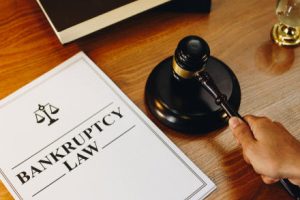Can Chapter 13 Save My Old Illinois Home?

The Consumer Financial Protection Bureau recently passed a rule giving distressed homeowners 120 days before a mortgage lender could begin foreclosure proceedings. But this rule may not be as consumer-friendly as it seems.
One missed payment is usually not a big deal. After two missed payments, the bank may still be willing to work with the homeowner, but as a practical matter, it will be difficult or impossible to catch up at that point. After three missed payments, the bank is marking time until it can send an acceleration notice.
So, if you are more than one house payment behind, you probably need to file bankruptcy. Most likely, things will only get worse from that point.
How the Automatic Stay Protects Your Home
Immediately after debtors file their voluntary petitions, Section 362 of the Bankruptcy Code takes effect, in most cases. Debtors do not have to prove negligence, wrongdoing, or anything else to stop:
- – Foreclosure,
- – Creditor harassment,
- – Repossession,
- – Wage garnishment, and
- – Other adverse creditor actions.
If the debtor has filed bankruptcy in the recent past, even if it was under another name or on behalf of another entity, the Automatic Stay may only have a limited effect.
Typically, the Automatic Stay remains in effect as long as the Chapter 13 is pending. That could be as long as five years. If the debtor stays current on the monthly debt consolidation payments and obeys other court instructions, moneylenders can only take adverse action if the bankruptcy judge gives them special permission. That’s not likely to happen.
Advanced Affordability Options in a Chapter 13
Chapter 13 does more than protect your home in the next few weeks. It also makes it more affordable over the next few months, and possibly over the next few years.
Past-due secured debt, like mortgage arrearage, goes into the monthly debt consolidation payment. The debtor and trustee (person who oversees the bankruptcy for the judge) work together to develop an income-based repayment plan. In other words, debtors pay what they can afford to pay and when they can afford to pay it. As long as the repayment plan reduces the amount to zero at the end of the bankruptcy, moneylenders must accept it, in most cases.
A strip-off may be an option as well. Assume Tyrone borrowed $100,000 to purchase his home, and he also took out a $25,000 Home Equity Line of Credit. If the house is worth $100,000, this asset does not have enough value to secure both the purchase mortgage and the HELOC.
Therefore, the judge could rule that the HELOC is an unsecured debt. Since unsecured debts are dischargeable in bankruptcy, that ruling could save Tyrone thousands of dollars per year over each of the next several years.
Other options could be available as well. For example, if Tyrone bought an older home that has a small mortgage, the cram-down rule could take effect. In some cases, Tyrone might be able to pay the fair market value of the home, as opposed to the loan amount, and own the home free and clear at the end of the bankruptcy.
Reach Out to Dedicated Lawyers
Chapter 13 can help your family stay in their home today and tomorrow. For a free consultation with an experienced Chicago Chapter 13 bankruptcy attorney, contact the Bentz Holguin Law Firm, LLC. Convenient payment plans are available.
Resource:
consumerfinance.gov/ask-cfpb/i-cant-make-my-mortgage-payments-how-long-will-it-take-before-ill-face-foreclosure-en-1849/


